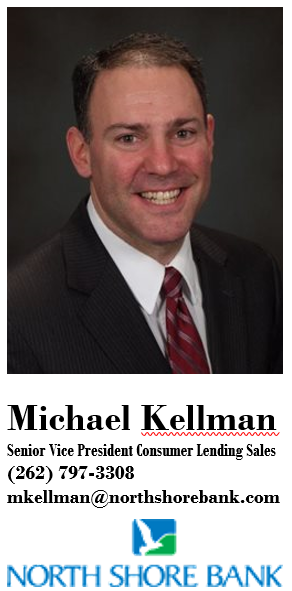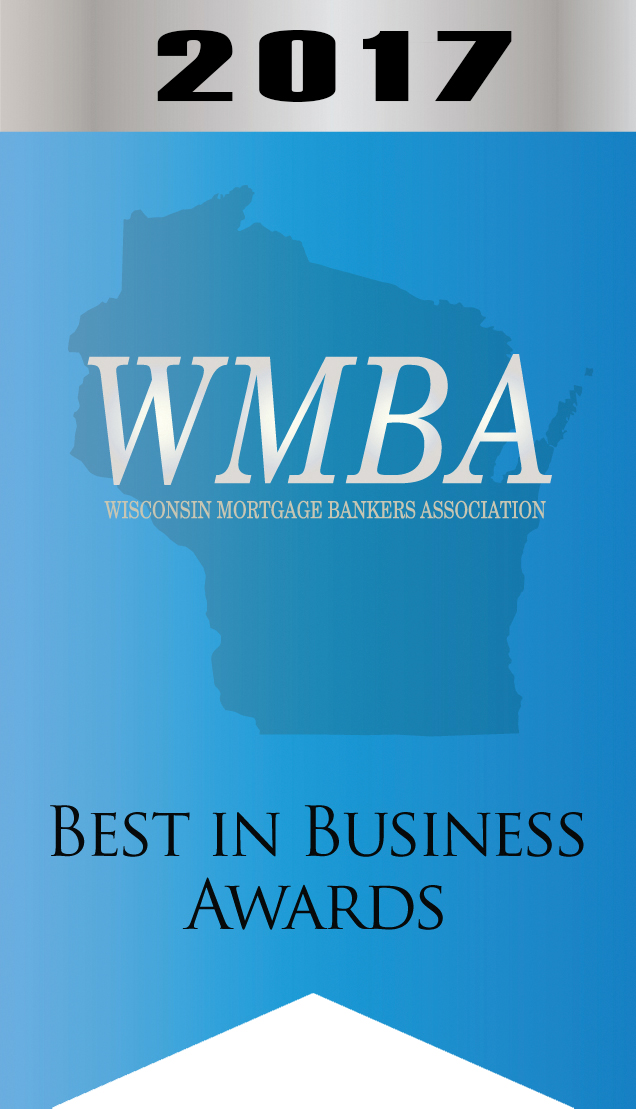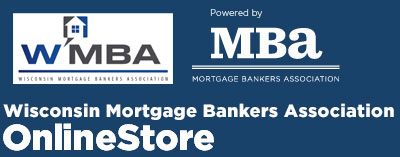| |
Presidents Message
State News & Events
Legislative Update - George Klaetsch
WMBA Annual Golf Outing
Best in Business Awards
Chapter News & Events
|
|

|

As I sit down to write this final WMBA President’s message and reflect on the previous year, I am proud of the direction of this organization and the very capable hands I am turning it over to.
This past year we added a larger focus on social media. We hired an intern, Justin Long, to help with this process and have grown to nearly 200 LinkedIn followers, almost 100 Facebook followers and a growing number of Twitter and Instagram followers. These social media pages will continue to help the WMBA get our message out to our members, prospective members and the general public. If you have not yet signed up, please do so. Justin has some great things planned for this next year in terms of new information, education and entertainment that will help grow our membership and keep our members better informed.
I would like to take a moment to thank several people as it really takes a village to keep this great organization running smooth. First, Heather and Sara of Morgan Data have been enormously helpful in running the day to day operations of the WMBA including our special events. I talk with them each week and am always surprised at how much work gets done for each meeting. Thank you for all you do. George Klaetsch of Klaetsch Public Affairs Strategies does a super job of keeping our legislative committee and board of directors updated on pending legislation and all things political. I have learned firsthand the importance of political involvement and have quickly come to realize the importance of raising money in our PAC and Conduit accounts. There is never a bad time to consider even a small donation to either of the WMBA political accounts. These funds help the WMBA further our legislative agenda and profile within the Capitol!
I am deeply thankful for our executive committee, board of directors, committee chairs and chapter representatives. This is where the heavy lifting of our organization takes place. These people are the ones who make our organization run, help educate our members and create an atmosphere of networking and idea sharing. Thank you to all of you. If you are not currently active, please consider a leadership position within one of our chapters or committees to get the full benefit of your membership in the WMBA.
Thank you for the opportunity to be involved in this organization and exponentially increase my network of business associates and friends. Each of you has helped me and I greatly appreciate it. I look forward to seeing you at the many great events this upcoming year.
|

|
Legislative Update - George Klaetsch
As the Wisconsin State Legislature has primarily focused on the 2017-19 biennial budget, there has been a flurry of spring activity pertaining to legislation that is of interest to the mortgage banking industry.
The following are brief descriptions, backgrounds and legislative activity of bills that the WMBA staff and Legislative Committee have been monitoring over the past month. Some of which the association has already taken a position on and some that WMBA positions are pending. If you have any feedback on these bills, please contact a WMBA Legislative Committee member to ensure your input is considered.
Senate Bill 175 & Assembly Bill 253 - http://docs.legis.wisconsin.gov/2017/related/proposals/ab253
Authored by Senator Luther Olsen and Representative Joan Ballweg, refer to “procedures related to a sale of a foreclosed property by a sheriff or referee.” In the Senate, the bill was read for the first time on April 13, 2017, and was referred to Senate Economic Development, Commerce and Local Government. In the Assembly, on May 19, 2017, the Committee on Local Government with eight ayes and zero noes recommended passage. That same day, the bill was referred to the committee on rules, which was the bill’s most recent action.
Senate Bill 212 & Assembly Bill 280 – http://docs.legis.wisconsin.gov/2017/related/proposals/sb212
Authored by Senator Chris Kapenga, and Representative Scott Krug, refers to “incorporating financial literacy into the curriculum of public schools.” On April 20, the bill was read for the first time in the Senate and referred to the Committee on Education. In the Assembly, the bill was read for the first time on April 24, and was referred to the Committee on Financial Institutions.
Senate Bill 213 & Assembly Bill 283 – http://docs.legis.wisconsin.gov/2017/related/proposals/ab283
Authored by Senator Chris Kapenga, and Representative Rob Stafsholt, refer to “authorizing financial institutions to conduct savings promotion prize programs.” In the Senate, the bill was read for the first time on April 20, 2017, and was referred to the Committee on Revenue, Financial Institutions, and Rural Issues. In the Assembly, the bill was initially read on April 24, and referred to the Committee on Financial Institutions.
Senate Bill 158 and Assembly Bill 211 – http://docs.legis.wisconsin.gov/2017/related/proposals/sb158
Authored by Sen. David Craig & Representative Robert Brooks, refer to “a property owner’s right to refuse entry into his or her home for assessment purposes and conditions for appearing before the board of review.” In the Senate, the bill was read for the first time on April 7, 2017, and was referred to the Committee on Economic Development, Commerce and Local Government. On April 11, Senator Craig offered Senate Amendment 1, and on May 3, a public hearing was held. In the Assembly, the bill was heard for the first time on April 10, and was referred to the Committee on Local Government.
Return to Top

WMBA Annual Golf Outing
September 7, 2017
Broadlands Golf Club
18 Augusta Way
North Prairie, WI
Registration and Sponsorship Now Open!
.png)
Return to Top

Best in Business Awards
October 19, 2017
The Madison Concourse Hotel & Governor's Club
1 West Dayton Street
Madison, WI
Interested in nominating an individual for a BIB award, click here for the nominations form.
Registration and Sponsorship Now Open!
.png)
Madison Chapter
Milwaukee
Return to Top
Northeast
Return to Top
April New Home Purchase Mortgage Applications Drop 4.3 Percent Year over Year
WASHINGTON, D.C. (May 15, 2017) - The Mortgage Bankers Association (MBA) Builder Applications Survey (BAS) data for April 2017 shows mortgage applications for new home purchases decreased 4.3 percent compared to April 2016. Compared to March 2017, applications decreased by 20 percent relative to the previous month. This change does not include any adjustment for typical seasonal patterns.
"For the first time this year, mortgage applications for new homes in April were lower than the same month a year ago. Mortgage applications for new homes fell more than 20 percent in April after peaking in March, as they have the past 2 years," said Lynn Fisher, MBA's Vice President of Research and Economics. "A relatively strong March may have pulled forward some applications from April, exacerbating the normal seasonal fall-off. On net, year to date applications for new homes are running about 3 percent above the same period from 2016. Despite steady demand for housing, homebuilders continue to face rising costs for labor and materials which will continue to moderate the pace of building."
By product type, conventional loans composed 68.5 percent of loan applications, FHA loans composed 17.7 percent, RHS/USDA loans composed 1.4 percent and VA loans composed 12.4 percent. The average loan size of new homes decreased from $328,192 in March to $326,284 in April.
The MBA estimates new single-family home sales were running at a seasonally adjusted annual rate of 517,000 units in April 2017, based on data from the BAS. The new home sales estimate is derived using mortgage application information from the BAS, as well as assumptions regarding market coverage and other factors.
The seasonally adjusted estimate for April is a decrease of 22.8 percent from the March pace of 670,000 units. On an unadjusted basis, the MBA estimates that there were 50,000 new home sales in April 2017, a decrease of 19.4 percent from 62,000 new home sales in March.
MBA's Builder Applications Survey tracks application volume from mortgage subsidiaries of home builders across the country. Utilizing this data, as well as data from other sources, MBA is able to provide an early estimate of new home sales volumes at the national, state, and metro level. This data also provides information regarding the types of loans used by new home buyers. Official new home sales estimates are conducted by the Census Bureau on a monthly basis. In that data, new home sales are recorded at contract signing, which is typically coincident with the mortgage application.
For additional information on MBA's Builder Applications Survey, please click here.
Return to Top
U.S. Mortgages in Foreclosure Hit Decade-Low in First Quarter: MBA
The percentage of U.S. mortgages in the process of foreclosure at the end of the first quarter fell to its lowest level since the first quarter of 2007, the Mortgage Bankers Association said on Tuesday.
The share of home loans in foreclosure was 1.39 percent in the first three months of 2017, down 14 basis points from the fourth quarter and 35 basis points lower than one year ago, the Washington-based industry group said.
“In addition, nearly all states had a decrease in the percentage of loans in foreclosure in the first quarter," MBA’s vice president of industry analysis Marina Walsh said in a statement.
Other measures on homeowners' creditworthiness generally improved in the first quarter, MBA said.
The delinquency rate for mortgages on one- to four-unit homes decreased to 4.71 percent in the first quarter, down 9 basis points from the fourth quarter and 6 basis points lower from a year earlier.
The percentage of loans on which foreclosure actions were started was 0.30 percent in the first quarter, up 2 basis points from the previous quarter, but down 5 basis points from one year ago. This was the first rise in foreclosure starts since the fourth quarter of 2014, MBA said.
The year-over-year declines in late payments and foreclosure actions on "conventional" mortgages that are guaranteed by Fannie Mae (FNMA.PK) and Freddie Mac (FMCC.PK) and ones backed by the Federal Housing Administration (FHA) and Veterans Administration (VA) stemmed from ongoing job growth and signs of rising wages, according to MBA.
"These fundamentals have helped to support the performance of all loan types – whether FHA, VA or conventional loans," Walsh said.
Return to Top
Wisconsin Mortgage Bankers Association Online Store
 The WMBA and the MBA have teamed up to bring you great access to the education components you need to stay current in the Mortgage Banking Business.
For every product purchased through the WIMBA-MBA store the WMBA receives a % back.
Please use the link below to help support our Association!
Wisconsin Mortgage Bankers Online Store
Remember to check back often!
|


 The WMBA and the MBA have teamed up to bring you great access to the education components you need to stay current in the Mortgage Banking Business.
The WMBA and the MBA have teamed up to bring you great access to the education components you need to stay current in the Mortgage Banking Business.






